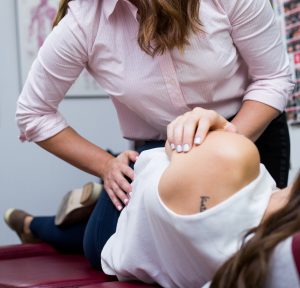Rotational sport injuries are common – especially in the low back. Golf, tennis and baseball are just a few examples of sports that twist the body, placing extra pressure on the spine. Studies reports up to 84% of rotational athletes may experience low back pain due injury from their sport – more common than any other type of sports.

What happens to the lumbar spine during rotation?
During rotation of the lumbar spine, movement is limited due to the large amount of ligaments and musculature that hold the spine upright. The facet joints – connection between each vertebra – compress togetheron the side opposite to rotation to provide stability. This also prevents excessive disc movement and allows them to absorb shock. Lumbar spine rotation is limited to approximately 5 degrees per side.
How do rotational sport injuries occur?
Several theories exist when examining why rotational sport injuries occur so frequently.
- Twisting increases pressure at the spine. With explosive movements required by sports – swinging a golf club, smashing a tennis ball or hitting a home run – this force can push the athlete past their stability point if not trained correctly.
- The erector spinae is often over used in athletes with chronic low back pain. Deeper stabilizers – including transverses abdominis and multifidus – were found to be inactive during golf swings in those with a history of low back pain.
- Co-contraction of muscles is most difficult to achieve with rotation. This is a complex movement that requires musculature to work together which is more difficult to master
Which rotational injuries are most common?
Disc herniations, fractures, spondylolisthesis and sprain strain injuries are the most common findings among rotational athletes. Structures impacted include intervertebral discs, ligaments, supporting musculature, spinal nerves and vertebrae.
What can I do to prevent rotational sport injuries?
Start to train the body in rotational movements, working up to sports performance. Below are 5 phases for rotational athletes to increase injury prevention.
- Neuromuscular activation – ensure athlete can properly activate muscles that support the spine during rotation
- Dynamic stability – activate these muscles during movement
- Strengthen – increase muscular strength to support the spine during rotation
- Power – work their muscles at an increased rate during rotational movements
- Sport specific – differing upon athlete, examples include repetitive swings of golf club or practicing a slapshot in hockey

Curious how your spine moves? Custom can help you determine which rotational movements you struggle with and how to get you stronger and prevent injuries long term. Book an appointment with Custom today at our Palo Alto or Santa Clara location to have your movement assessed!







